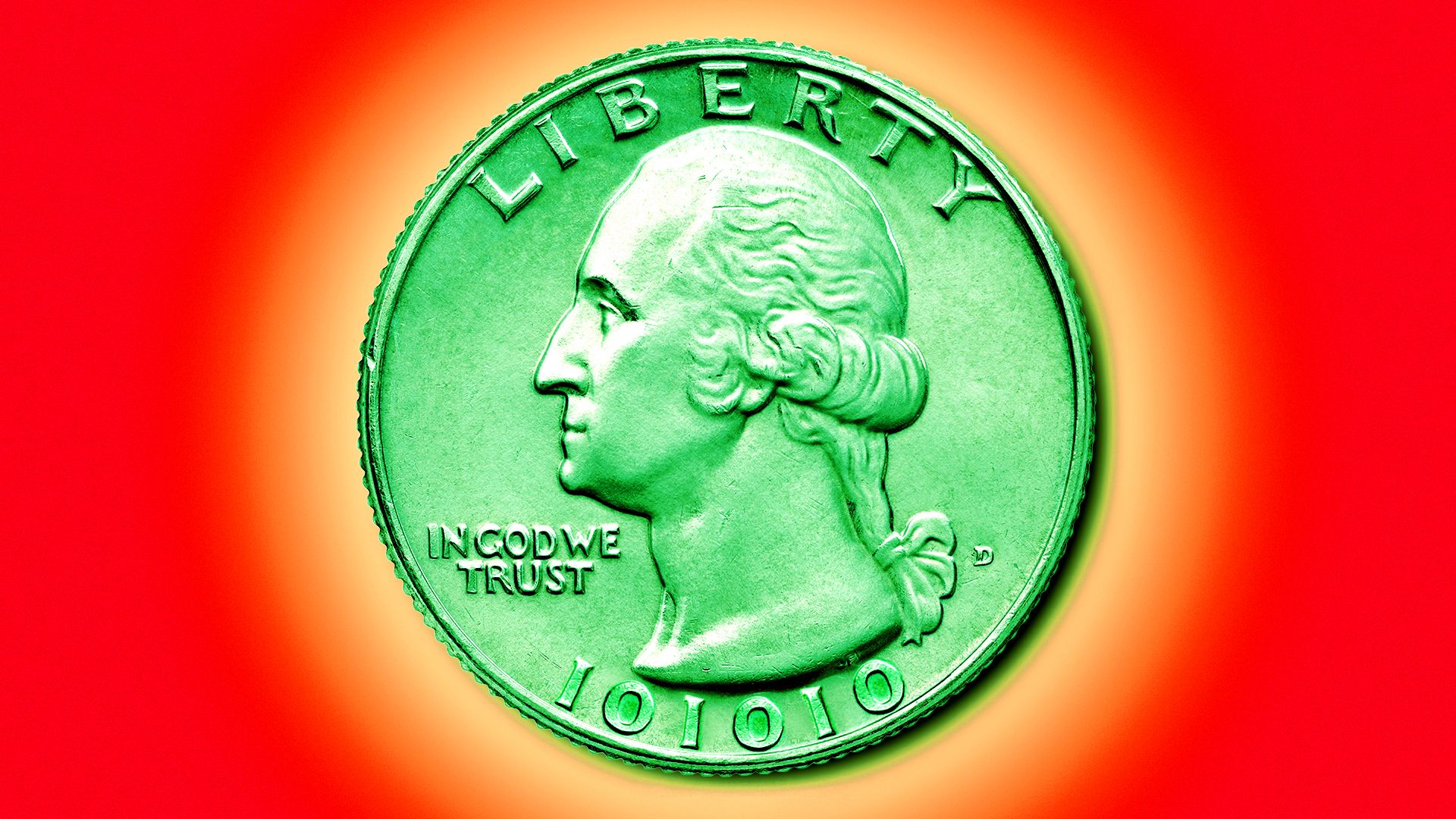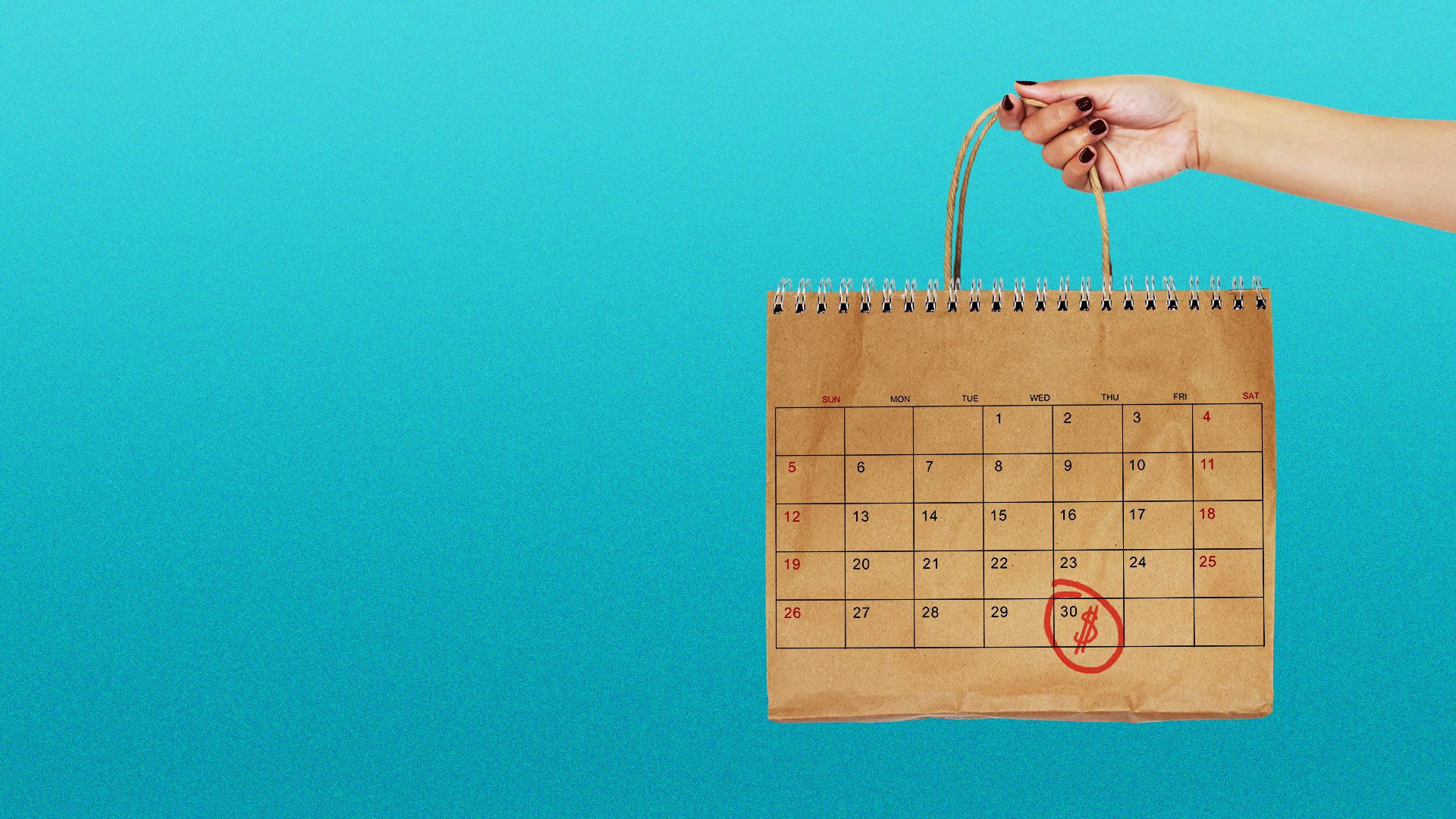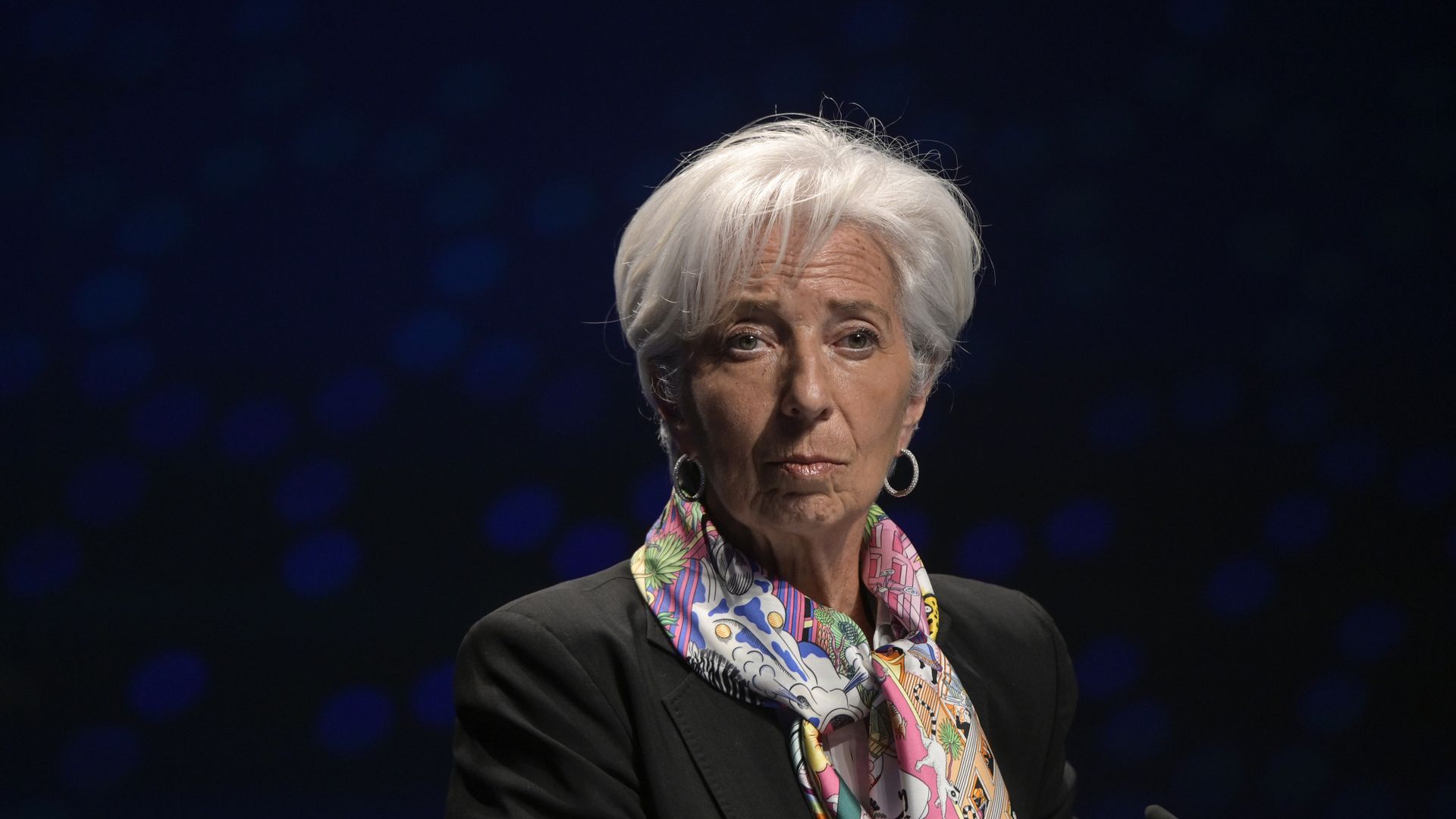| | | | | | | Presented By The Ascent | | | | Axios Markets | | By Aja Whitaker-Moore ·Jun 11, 2021 | | 😎Welcome back! (Today's T.GI.F. Smart Brevity count: 1,210 words, 4.6 minutes.) 📺Coming up Sunday on "Axios on HBO" ... Suzanne Clark, president and CEO of the U.S. Chamber of Commerce, tells Mike Allen what it's like for business to deal with the Biden administration, and diagnoses the worker shortage. (See Clip) - Catch the full interview and much more on Sunday, June 13, at 6 pm ET/PT on HBO and HBO Max.
| | | | | | 1 big thing: Central banks flirt with digital currencies |  | | | Illustration: Annelise Capossela/Axios | | | | The U.S. is starting a national conversation around a central bank digital currency, or CBDC, writes Axios' Hope King. Why it matters: Several other countries have already experimented with or released early versions of CBDCs. Such a pivot could aid underbanked populations, and help make banking and monetary policy more efficient. Driving the news: The Senate Banking Committee held a hearing on CBDC Wednesday, led by Sen. Elizabeth Warren (D-Mass.). - The Federal Reserve is set to release a discussion paper next month on how it's thinking about a digital dollar.
How it would work: First, a CBDC is a digital version of the dollar, so its value wouldn't fluctuate versus the dollar… because it is the dollar. - Put simply, a CBDC is just a digital version of an existing currency that is issued, governed and backed by a central bank.
- CBDCs would be recognized as legal money, unlike bitcoin.
The pros: It could enable more people to become part of the banking system, reduce the cost to bank and increase the rate of payments innovation. - The Federal Reserve could also gain more precision over the money supply, and lawmakers could distribute government assistance programs to a wider underserved group of the country, researchers point out.
The cons: Potential drawbacks include the traceability of digital payments. The anonymity of cash offers privacy. - Security of financial data on hundreds of millions of people will also not come easy.
What they're saying: "CBDCs are ultimately quite likely for many countries," Darrell Duffie, of Stanford's Graduate School of Business, tells Axios. Duffie was a witness at the Senate hearing. State of play: More than 60 central banks have been looking into CBDCs since 2014, according to a PwC report from April. - The Bahamas and Mainland China have active trials dubbed the "Sand Dollar" and the "Digital Yuan," respectively, that individuals can use as a form of digital cash.
- In the U.S., the Fed has been researching digital currencies since at least 2018, but at a less consistent pace compared with other central banks reviewed by PwC.
Be smart: While there is general agreement about what a CBDC is, countries are faced with hundreds of choices and decisions with respect to how they build their systems — and, in turn, what the long-term implications will be. Go deeper. |     | | | | | | 2. Catch up quick | | Leaders of the G7 countries plan to announce they will provide 1 billion doses of coronavirus vaccines to poorer countries. The pledge is part of a plan to "vaccinate the world" by the end of next year. (FT) A bipartisan Senate group says they've reached agreement on a framework for an infrastructure bill that would not include any tax hikes. (Axios) |     | | | | | | 3. Why buy-now-pay-later is so attractive |  | | | Illustration: Shoshana Gordon/Axios | | | | Buy-now-pay-later, or BNPL, is one of the fastest-growing areas of finance. The biggest player in the space, Klarna, on Thursday announced that it has raised $639 million at a valuation of $45.6 billion — an astonishing quadrupling in value in just eight months, writes Axios' chief financial correspondent Felix Salmon. Why it matters: For decades, credit cards have been the only practical way to borrow money to pay for big-ticket items that aren't quite as expensive as a car. Consumers liked credit cards for their convenience — and banks liked them for their high-interest rates. Now, finally, those cards have a competitor. By the numbers: Klarna reported that its number of American customers is up 118% year over year; in the first quarter, it had $18.1 billion of transaction volume, mostly in Europe. - Afterpay, its largest competitor, saw volume of $4 billion in the quarter, while Affirm had $2.3 billion.
Those numbers are tiny compared to credit card volumes, which means that potential growth remains enormous. Mastercard, Visa and American Express between them had $3.5 trillion of volume on their credit cards in 2020, just in the USA. The big picture: BNPL has clear advantages, for consumers, compared to credit cards. - It's often offered by merchants as a way to buy items interest-free.
- It's easy to use BNPL only for major purchases, and not for day-to-day spending.
- In the cases where you do pay interest, it doesn't compound as it does on credit cards.
How it works: Whenever you pay for an item on a credit card, you then have to pay interest on that purchase unless you make sure to pay off your credit card in full at the end of the month. - With BNPL, you're never defaulted to making interest payments. Either there's no interest at all, or else the interest rate is clearly stated upfront.
The bottom line: BNPL will never be as profitable as credit cards. But that hasn't stopped founders like Klarna's Sebastian Siemiatkowski from becoming billionaires. |     | | | | | | A message from The Ascent | | The high cash back card that smart spenders dream about | | |  | | | One of the highest cash back cards available now has 0% APR into 2022. Cardholders also enjoy: - No annual fee and up to 5% cash back on everyday purchases.
- An opportunity to secure $1,148 of value from the card.
See why The Ascent says this is their "number one pick for a one card wallet." | | | | | | 4. Inflation watch: no market jitters here |  Data: U.S. Bureau of Labor Statistics; Chart: Axios Visuals The May reading of the Consumer Price Index, out Thursday, was a doozy. In short, overall prices jumped 0.6% during the month, and were up 5% over the last 12 months, writes Axios' Kate Marino. Why it (might not) matter: We're only three months into this go-round of rising prices, so the crucial question of whether inflation is temporary, as the Fed expects it to be, or more structural, as some fear, isn't yet answerable. The big picture: "Some of the supply bottlenecks and distortions are very severe right now, and these things just take a while to play out," Yung-Yu Ma, chief investment strategist at BMO Wealth Management, tells Axios. - But the rising prices are broad-based, hitting nearly every category in May on a year-over-year basis, notes Ma. Healthcare is the only category that declined, by 1.9%.
Reality check: As market watchers hunt for clues there are enough data points to back whatever narrative you want. Investors are giving the Fed the benefit of the doubt — so far. - The S&P 500 rose to an all-time high Thursday, closing the day up 0.47%.
- The 10-year Treasury declined 5 basis points, closing at a three-month low of 1.45%.
What to monitor: - The price of shelter (effectively a measure of rent) is one to watch because as a category it's generally stickier, Ma says. And the last three months' gains in the shelter category together add up to 1% — which, annualized would amount to about 3%.
- Wage growth over the next few months, and whether businesses pass through higher costs to consumers.
- Fiscal policy. "I am watching ongoing fiscal negotiations more closely than near-term CPI prints — fiscal policy is more important for the medium-term inflation outlook than are current prices," wrote Eric Winograd, senior economist at AllianceBernstein, in a research note.
The bottom line: The latest CPI reading is unlikely to convince the Fed to pull forward any plans for reducing its market support. - "Changing the stance of monetary policy won't address supply chain disruptions," Winograd wrote.
|     | | | | | | 5. European Central Bank stays the course |  | | | Horacio Villalobos/Getty Images | | | | The European Central Bank said Thursday it would keep its key interest rates unchanged, and continue its emergency €1.85 trillion bond-buying program through at least March of next year, Kate writes. Why it matters: The ECB appears to be signaling a longer timeline for maintaining its current level of market support than the Fed has in the U.S. - Investors are looking for clues as to which central bank(s) may take the lead on tapering — and how that could affect the others.
State of play: Reuters reported in May that ECB board members were headed toward a "showdown" at the June 10 meeting over continuing the emergency bond purchases. - Ultimately, the ECB "didn't look to hedge its statements, or look to pull back on support anytime soon," BMO's Yung-Yu Ma tells Axios.
- The ECB expects to make purchases under the emergency program in the coming quarter "at a significantly higher pace than during the first months of the year," according to the statement.
|     | | | | | | A message from The Ascent | | The high cash back card that smart spenders dream about | | |  | | | One of the highest cash back cards available now has 0% APR into 2022. Cardholders also enjoy: - No annual fee and up to 5% cash back on everyday purchases.
- An opportunity to secure $1,148 of value from the card.
See why The Ascent says this is their "number one pick for a one card wallet." | | | | Thank you for reading! Have a great weekend. Send tips, or feedback to aja.moore@axios.com or hit me up on Twitter @AjaWMoore. |  | | The tool and templates you need for more engaging team updates. | | | | | | Axios thanks our partners for supporting our newsletters. If you're interested in advertising, learn more here.
Sponsorship has no influence on editorial content. Axios, 3100 Clarendon Blvd, Suite 1300, Arlington VA 22201 | | | You received this email because you signed up for newsletters from Axios.
Change your preferences or unsubscribe here. | | | Was this email forwarded to you?
Sign up now to get Axios in your inbox. | | | | Follow Axios on social media:    | | | | | |









No comments:
Post a Comment